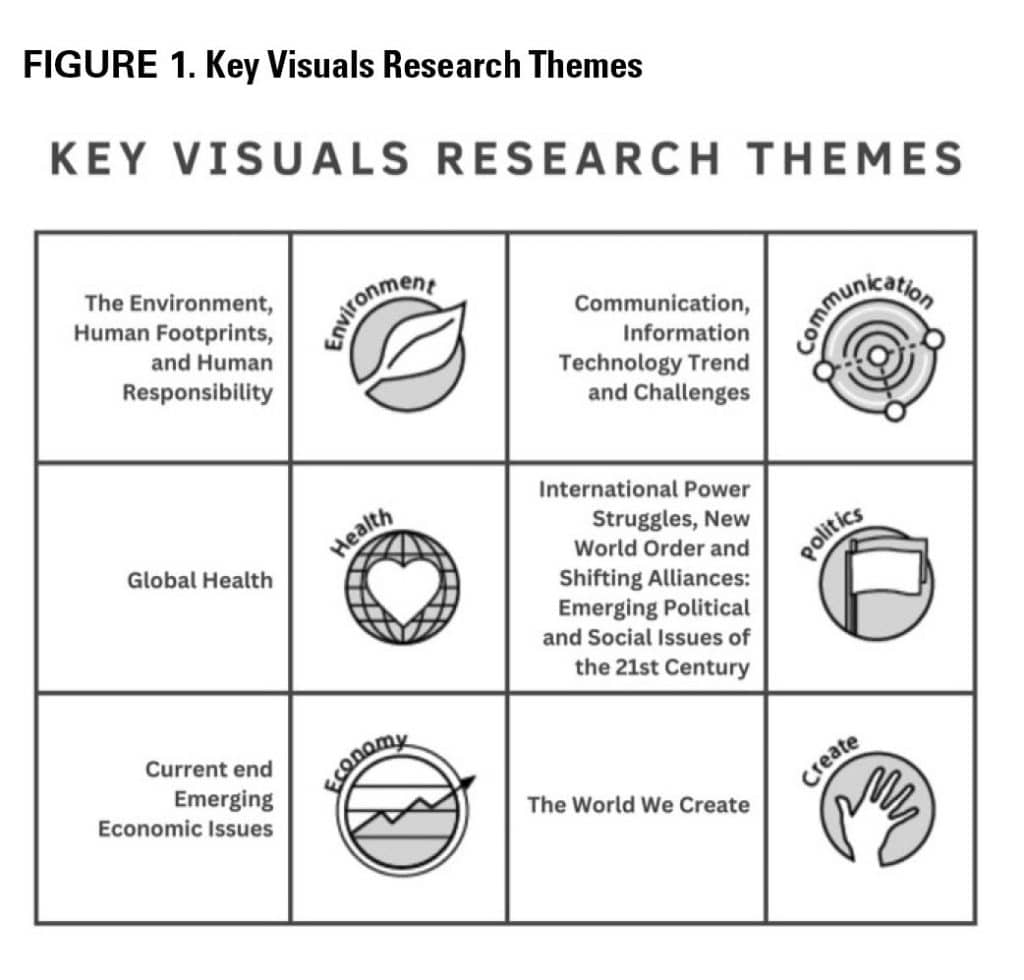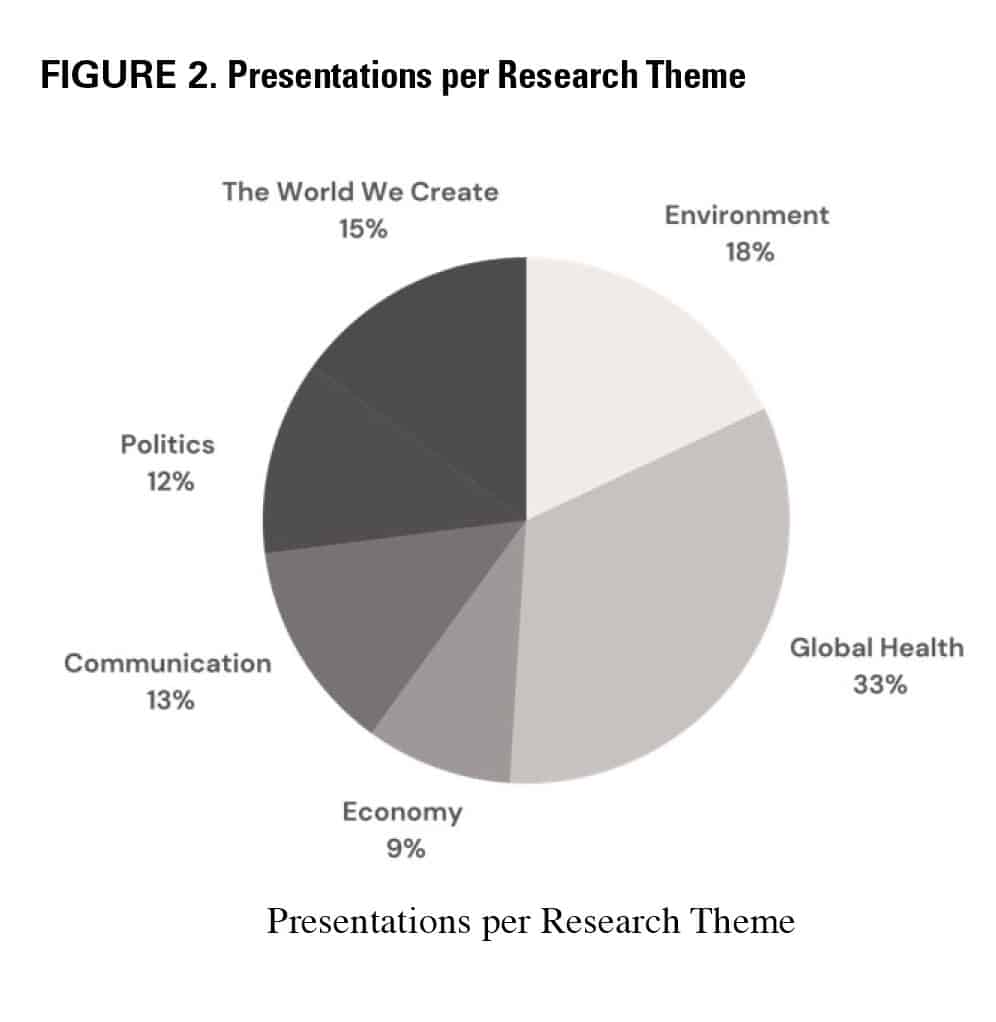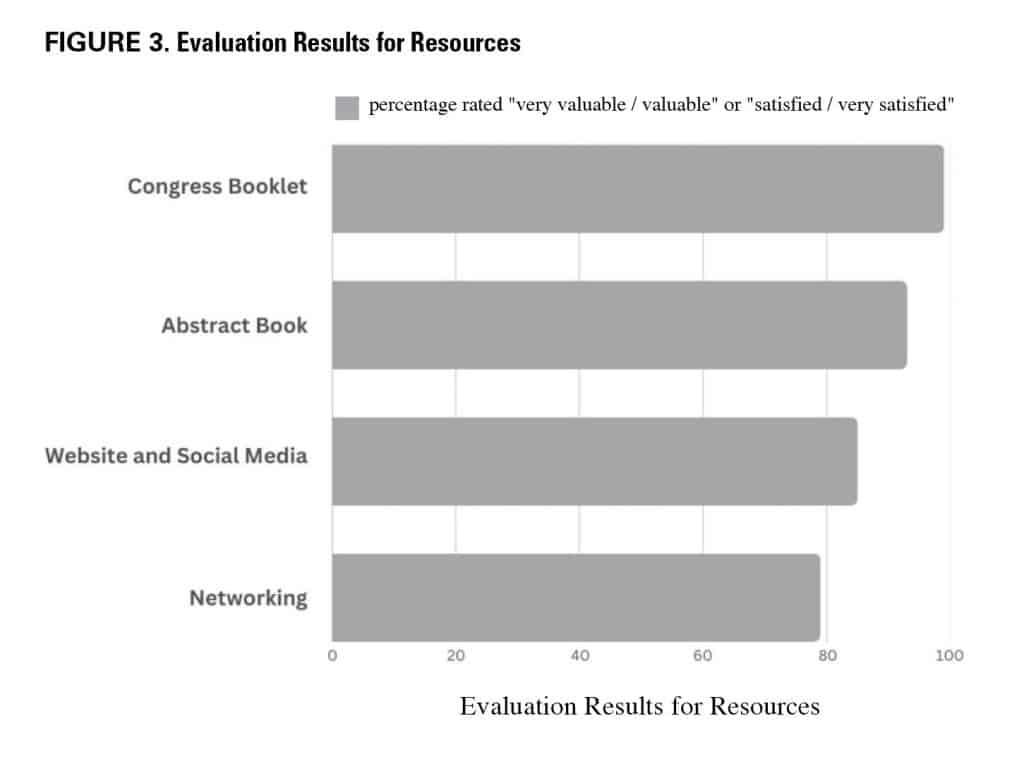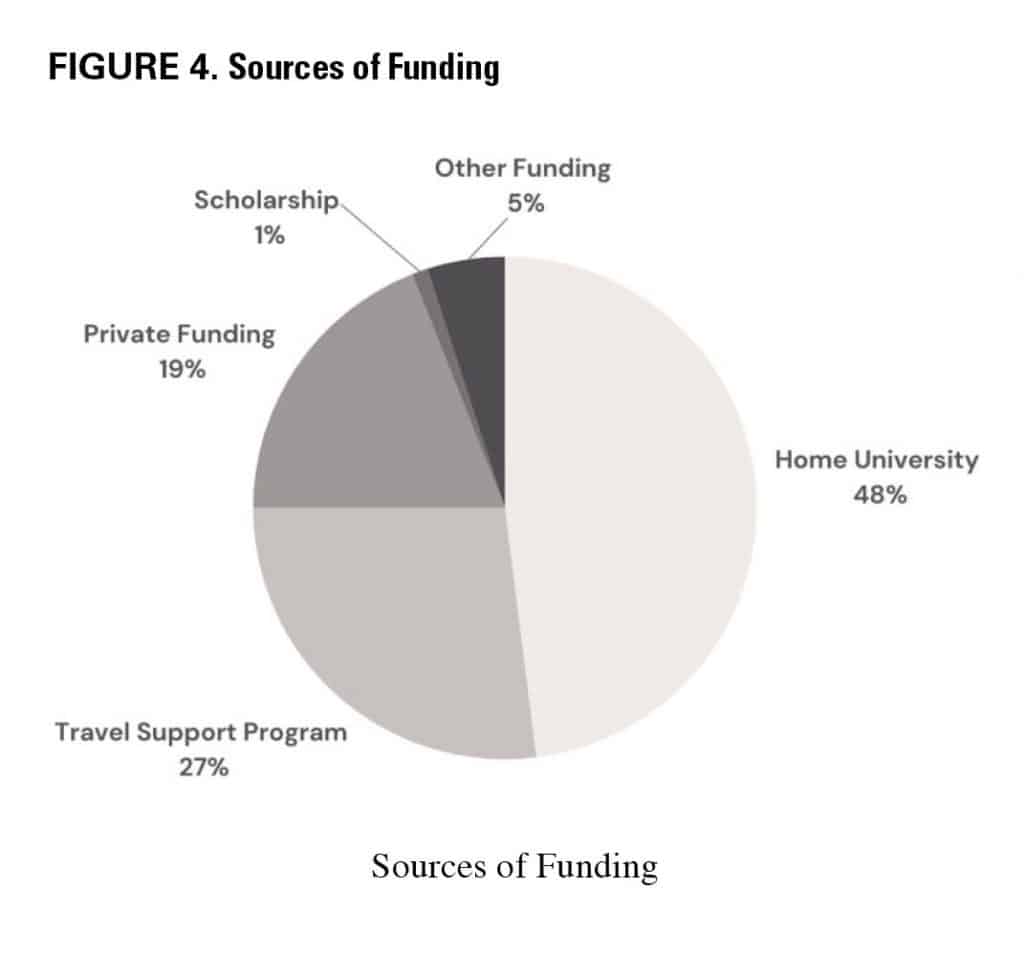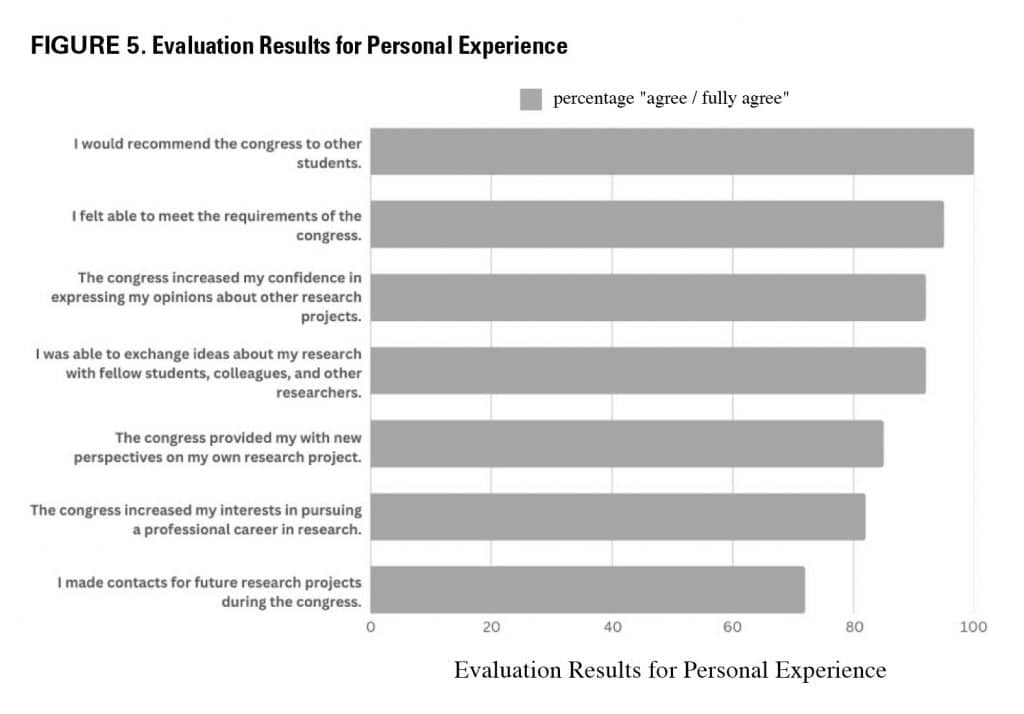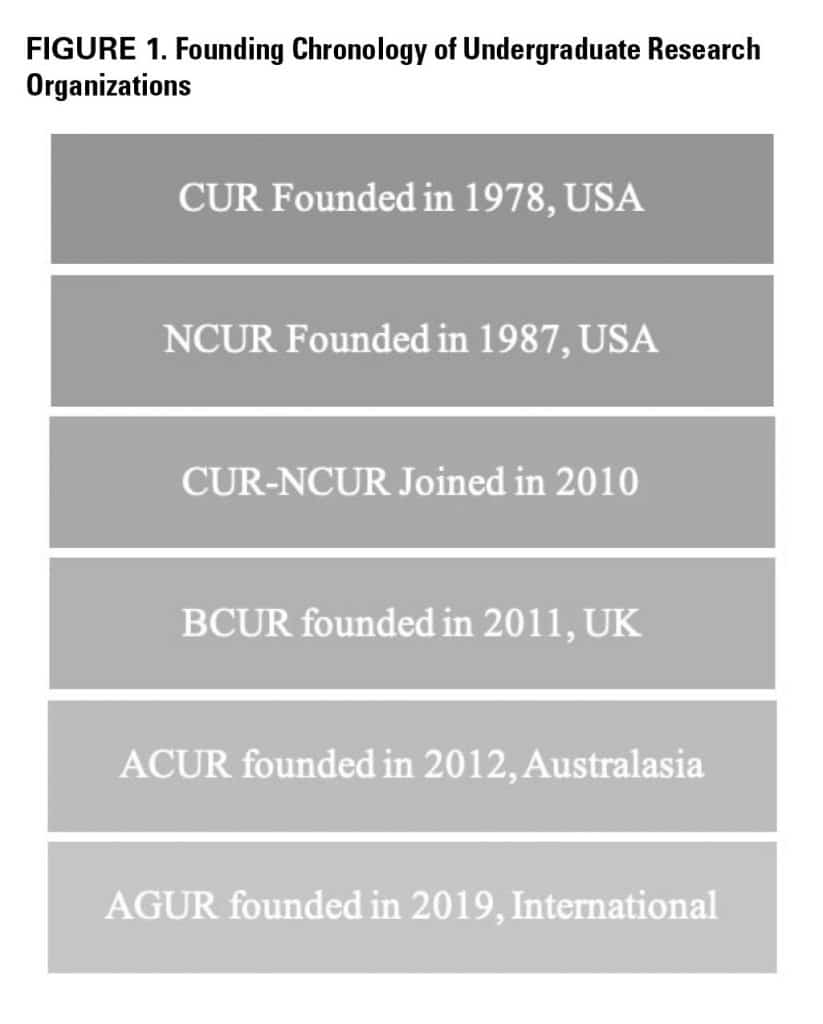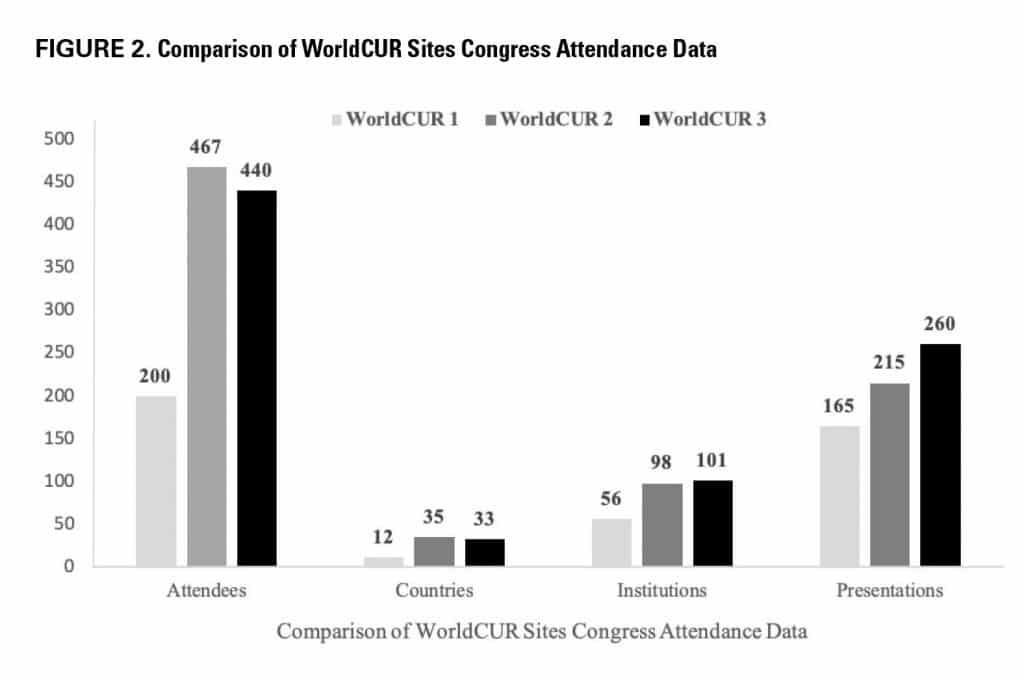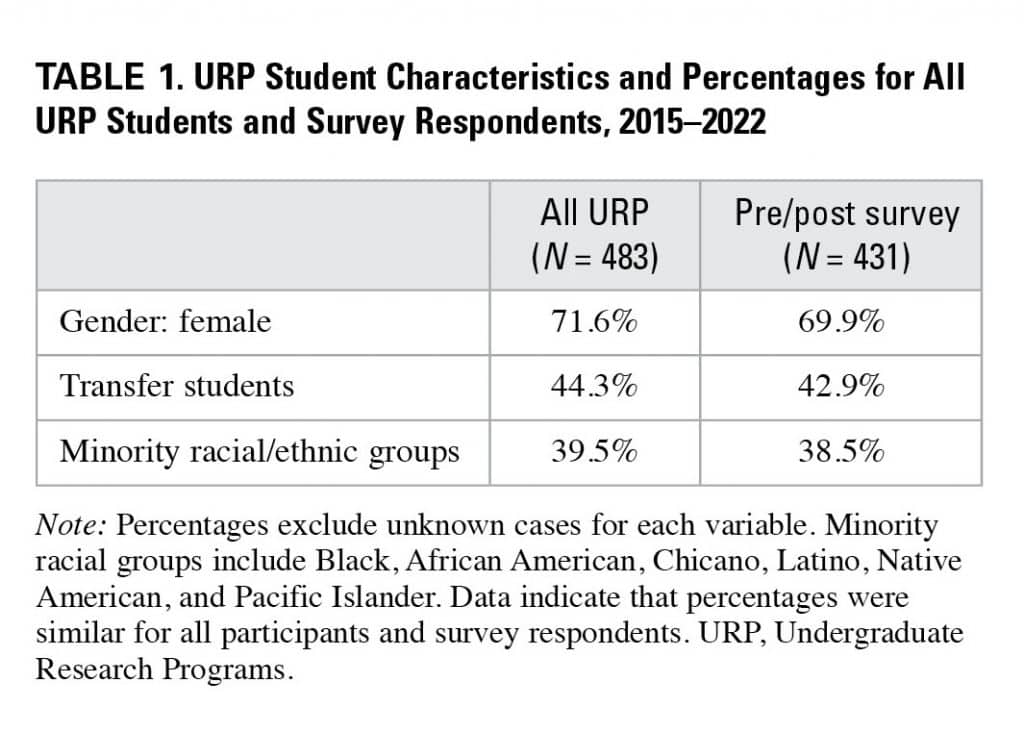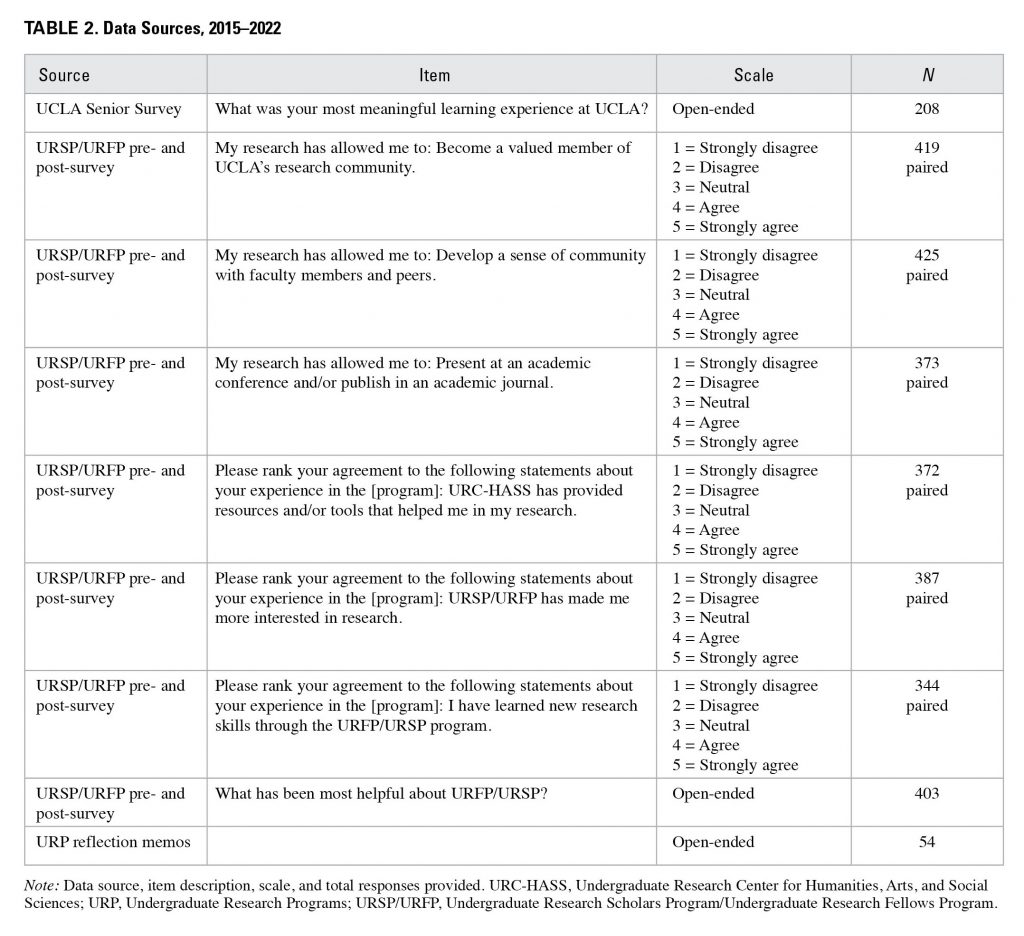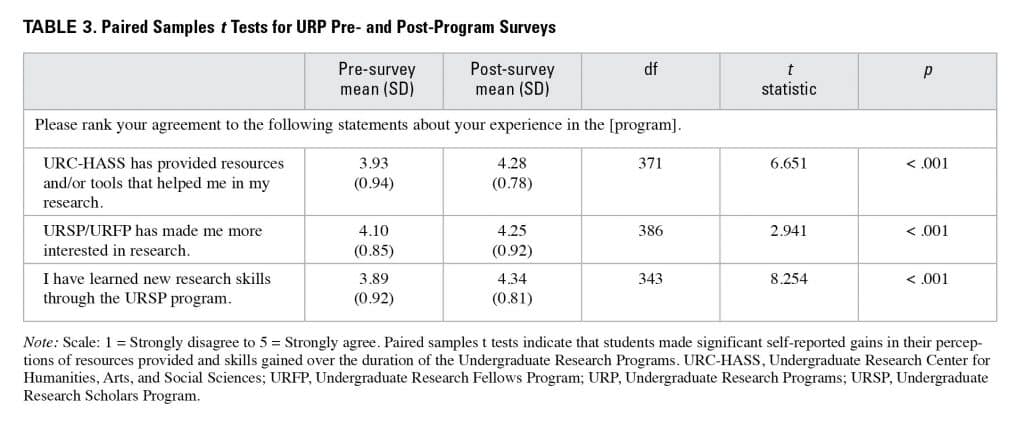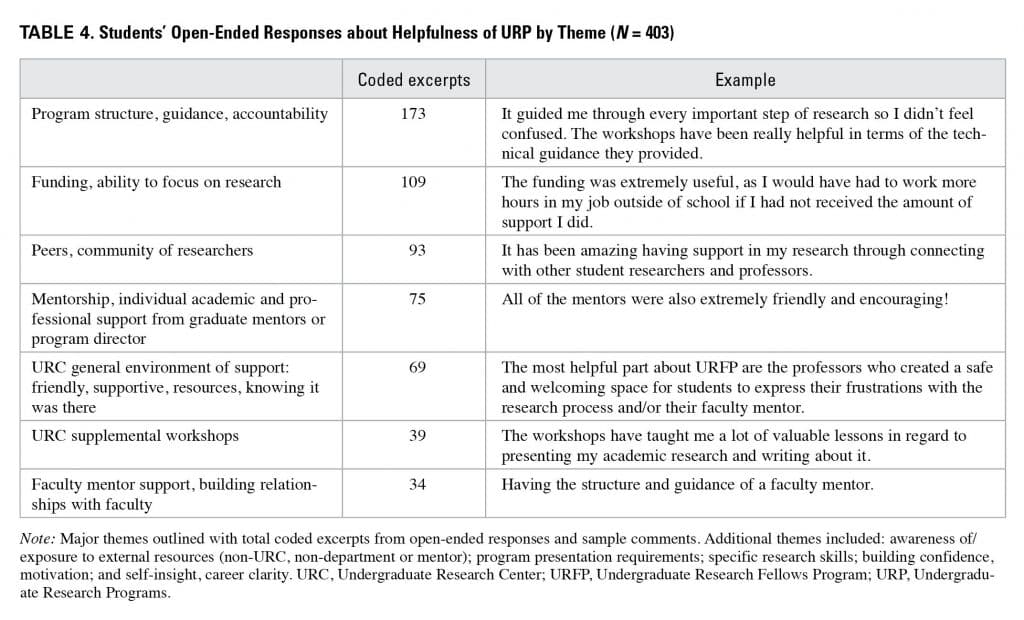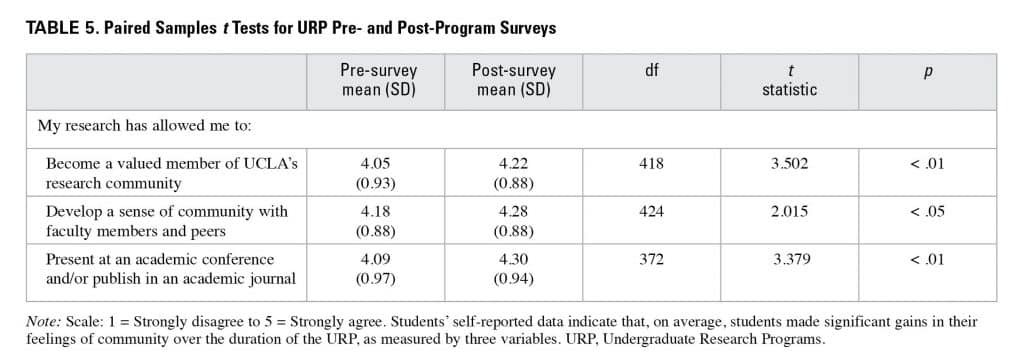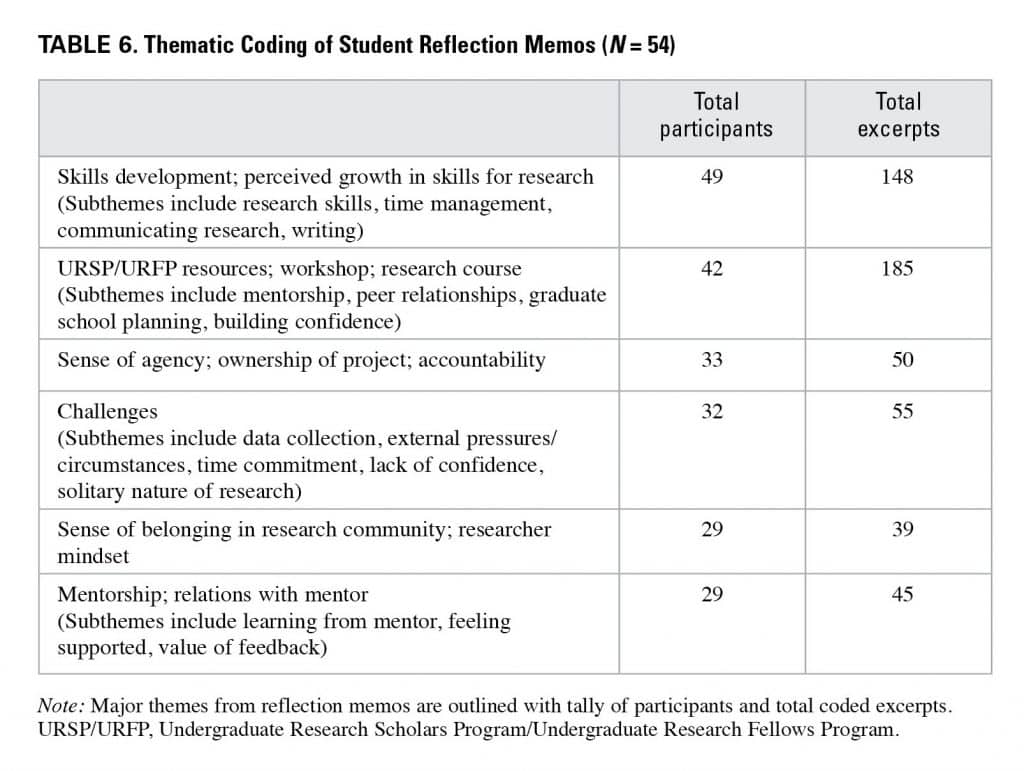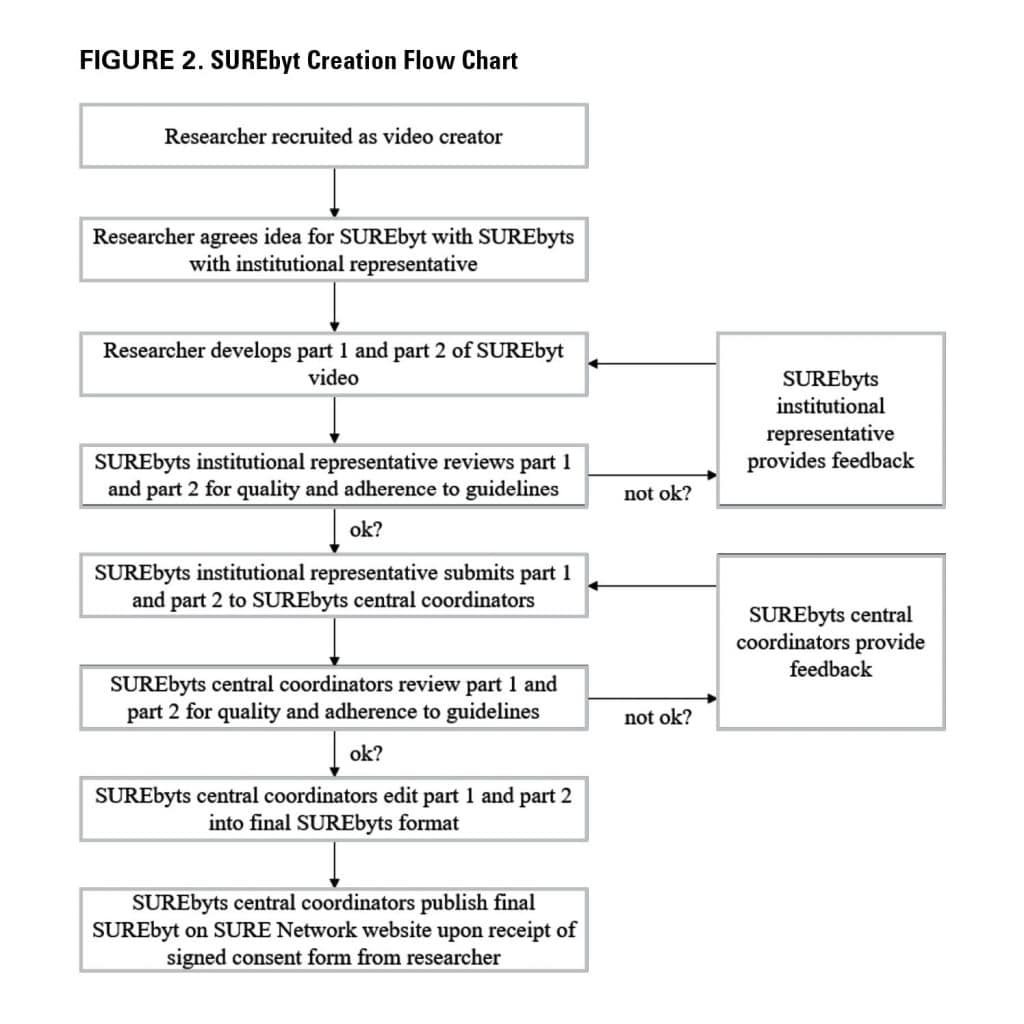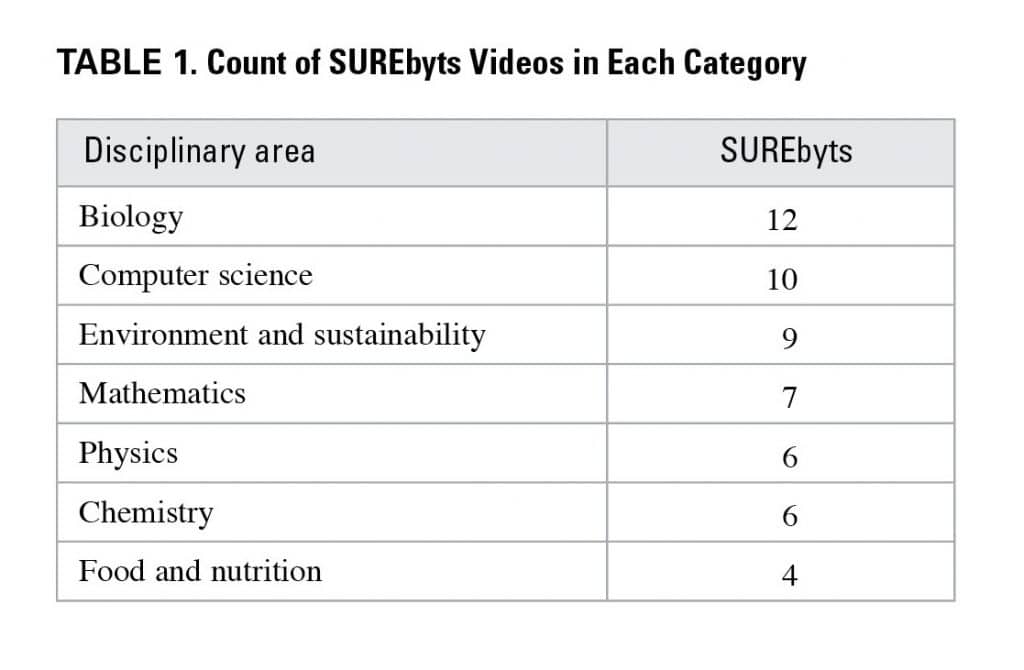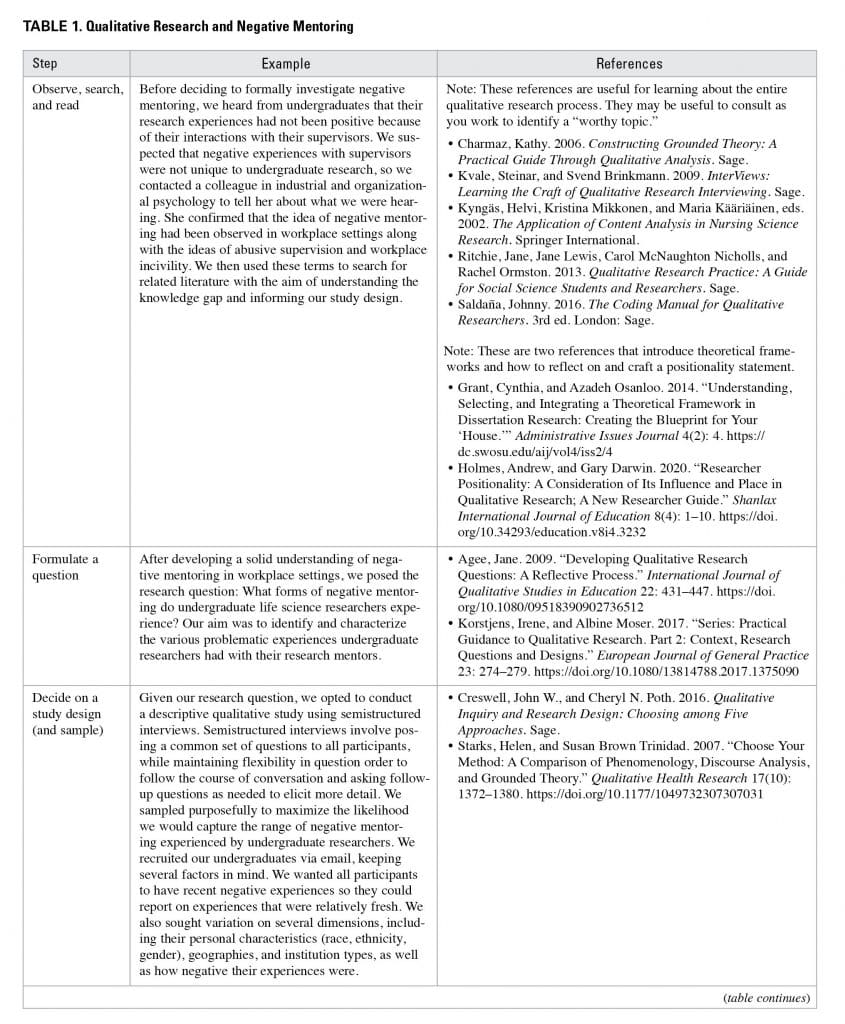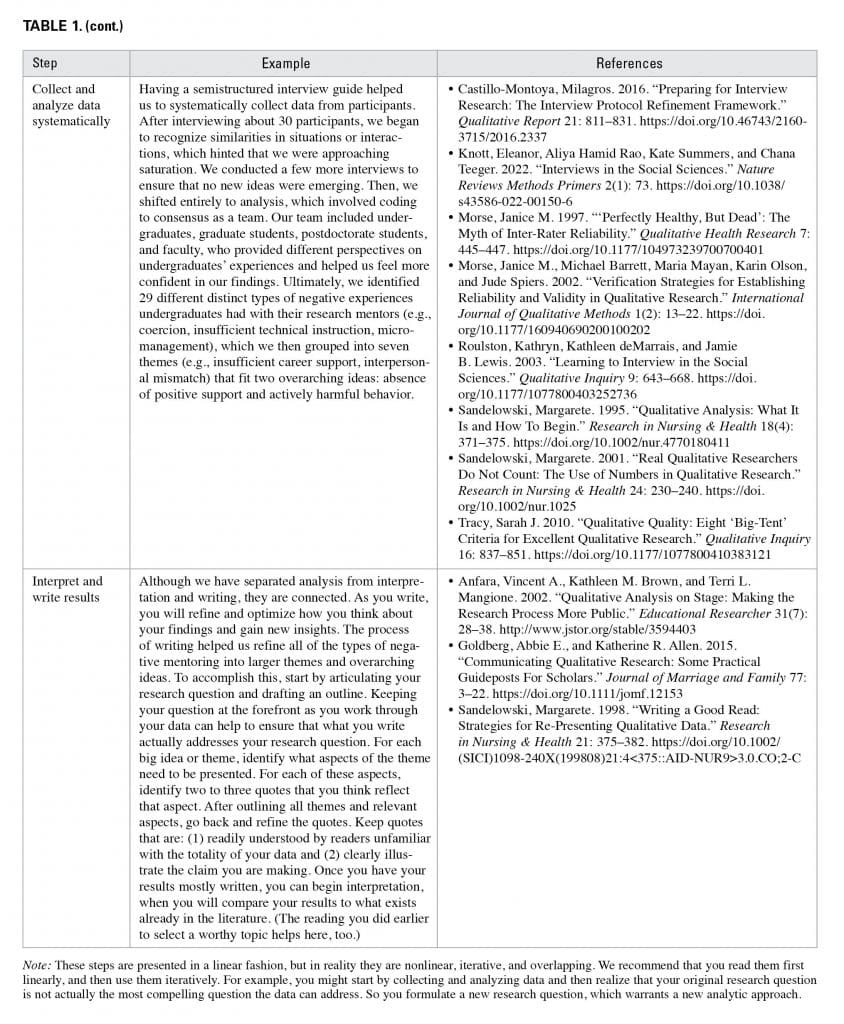Gibson, Caroline, Emma Barker, Jane Bryan. 2024. 3rd World Congress on Undergraduate Research, University of Warwick, UK. Scholarship and Practice of Undergraduate Research 7 (3): 26-33. https://doi.org/10.18833/spur/7/3/7
The University of Warwick, located in Coventry, England, is a major research institution with an acknowledged reputation for excellence in teaching and learning, innovation and links with business and industry (University of Warwick 2023a). In 2019, staff in the Institute for Advanced Teaching and Learning (IATL) at the university, an institution known for innovative, creative, and sector-leading student research initiatives, submitted a proposal to be the first UK institution to host the World Congress on Undergraduate Research (WorldCUR).
The WorldCUR was first conceived by a group of academics during the 2014 meeting of the National Conference for Undergraduate Research in the United States, with a goal of ‘bringing together faculty mentors, students, and staff with a focus on building lasting international collaboration’ (Rivera et al. 2018, 55). The first World Congress was hosted by Qatar University in 2016 and was supported by the Council on Undergraduate Research in the United States, which provided a link to its conference submissions platform and suggested panelists and moderators. The Congress was also supported by the Australasian Council for Undergraduate Research, which consulted throughout, and the British Conference of Undergraduate Research (BCUR) which drafted the Congress themes, provided abstract review, and developed the Congress schedule, among other roles (Rivera et al. 2018, 56). The University of Oldenburg successfully applied to be the next hosts for the event and the second World Congress took place there in 2019.
Warwick’s proposal aimed to bring WorldCUR together with the BCUR, to cross-pollinate each event with valuable aspects of the other. Anticipated advantages of this cross-pollination included bringing an existing national network and over a decade of pedagogic and conference organizing experience and adding to it elements of the first two WorldCUR events, including the complementary conference sessions and themed sessions, and the chance to bring new cultural and international perspectives from students around the world. BCUR originated in 2011 at the University of Central Lancashire, UK, and a group of institutions with a focus on undergraduate research support BCUR via representatives on the Executive Committee. BCUR is hosted annually by universities around the UK. Warwick staff have been involved with BCUR since its inception, as part of its Executive Committee and hosting the conference in 2012 and had been interested in submitting a proposal to host the conference for a second time. The decision to submit a joint hosting proposal for WorldCUR and BCUR was influenced by the strength of bringing an existing national conference together with a new international event, rather than competing with it. It was felt that, although there might be organizational challenges in hosting two large events together, overall, it would be advantageous to bring an existing structure and cohort of staff and students from BCUR to the joint events, and hosting concurrently would mean that students didn’t have to make a choice between attending a national or international conference in the UK in 2023.
Warwick’s proposal to host WorldCUR responded to the criteria circulated by the Alliance for Global Undergraduate Research (AGUR) steering committee, a committee formed for the oversight of WorldCUR, and reflected on Warwick’s position as a sector-leading institution in undergraduate research. It also foregrounded the IATL, where the conference organizing team was primarily based, and its status as a cross-faculty department with links throughout the university. The proposal highlighted IATL staff’s strong history of leading Warwick’s own undergraduate research programs and innovations, including conceiving of and hosting the International Conference of Undergraduate Research (ICUR) (University of Warwick 2023b), a video-linked conference bringing together student researchers from a range of participating institutions, and establishing the publication of Reinvention: an International Journal of Undergraduate Research in 2007 (University of Warwick 2023c). Supporting a wide spectrum of students to apply to and attend WorldCUR-BCUR was prioritized. A suite of synchronous and asynchronous training opportunities, developed, organized and presented by the organizing team was proposed, and covered topics from abstract writing through to advice on attending conferences and writing presentations, to be offered at varied times to accommodate students in different time zones. IATL’s vision for WorldCUR and BCUR was one of critical interdisciplinarity, internationalization and innovation, aligning to Warwick’s institutional priorities, as well as emphasizing a commitment to co-creation by centering students at the heart of the organizing team. While ICUR virtually connects around 400-600 students from specific participating institutions from six continents around the world, bringing the WorldCUR to Warwick would give valuable experience of hosting an international in-person event to the IATL team and inform the continued development of our own hybrid event.
Warwick’s hosting of WorldCUR-BCUR was focused on diversity, in terms of the global scope of attendees representing a variety of institutions and countries, presentation styles and disciplines. These strategic aims hoped to give a broad spectrum of undergraduate students a meaningful experience and a new understanding of research culture and their place within it.
The Organizing Team
The main organizing team consisted of five staff members, including a Project Support Officer whose role was solely focused on the event (University of Warwick 2023d). Three Student Directors for WorldCUR-BCUR were also recruited, selected from students who had already worked with the IATL team on student research activities, bringing a wealth of experience to the role. Input from one of IATL’s Co-Creation Officers, also an undergraduate student at Warwick, was also sought, to bring a different student perspective and support the orientation program (University of Warwick 2023d). Additional support for the event was provided by IATL staff members, including the administration of the travel fund and website development. Before the event, a large team of around forty student volunteers from Warwick were recruited and trained to fill roles as session chairs, room stewards, and registration and information assistants. Applying students were asked to provide information about their previous experience of student-oriented support roles and their attendance at international events, as well as what appealed to them about the role.
Impact of the Pandemic
With plans for the joint WorldCUR-BCUR event to take place in the spring of 2022, preparations were underway when the global COVID-19 pandemic struck in early 2020. The pandemic had an enormous impact on the planning, organization and timing of the events. A decision was made in summer of 2021, in conjunction with the AGUR steering committee and the BCUR Executive, to postpone the events by one year, to April 2023. This was primarily to allow equity of access to the conference for delegates from countries with different pandemic experiences and responses, and to attempt to deliver an in-person event. Even once that decision had been made, conversations continued regarding whether it would be possible to hold WorldCUR and BCUR in-person or if all, or part, of the conferences would have to be online. Key to these discussions were the increasing frequency and familiarity with online events across the globe, as well as the complexities of delivering hybrid events.
As deadlines approached, it was decided that WorldCUR and BCUR would be hosted as two fully in-person events. Having spent months studying and working at home, the many benefits of interacting in person had been starkly highlighted. Stakeholders in the events felt that a significant appetite for in-person attendance had been building. The Call for Abstracts was pushed to August 2022, to give time for work and travel restrictions to begin to resolve in most countries. However, there was still a great deal of uncertainty as to whether delegates would be able or willing to travel, and on the financial impact of the pandemic on institutions’ ability to fund student participation. The organizing team pressed ahead, aware that IATL was ideally placed to pivot to a hybrid event delivery should the international situation alter, using their decade of experience in delivering ICUR – the institution’s own video-linked international undergraduate research conference.
Abstract Submission and Acceptance
The call for abstracts launch, hosted on the Oxford Abstracts platform, was delayed for as long as possible, opening in July 2022, to confirm that the decision to host an in-person event was feasible and to try to ensure equity of access. While the abstract submission window was held open long enough to try to ensure that the delays due to the pandemic didn’t negatively affect diversity, equity, and inclusion regarding who was able to apply to present their work at the event, the timeline for the abstract acceptance process was much shorter than had originally been planned. Abstract submission closed in November 2022, and the first round of abstract reviews were completed before the end of the calendar year, which put additional pressure on the organizing team. The call for abstracts was sent via a variety of channels, including to institutions where attendees at previous World Congresses had worked or studied, to relevant staff at large research institutions around the world, as well as embassies and NGOs, in an effort to circulate it as widely as possible. It invited students to submit an abstract specifically to WorldCUR or BCUR, or for consideration for both conferences. The submission process was derived from the format used for ICUR, which was designed to challenge undergraduates to consider their research work from an interdisciplinary and international perspective, and to construct an abstract accessible to an educated, but non-specialist audience (University of Warwick 2023e).
Over 750 submissions were received in total across the two conferences from 714 students (Table 1), demonstrating a renewed confidence in attending in-person events.
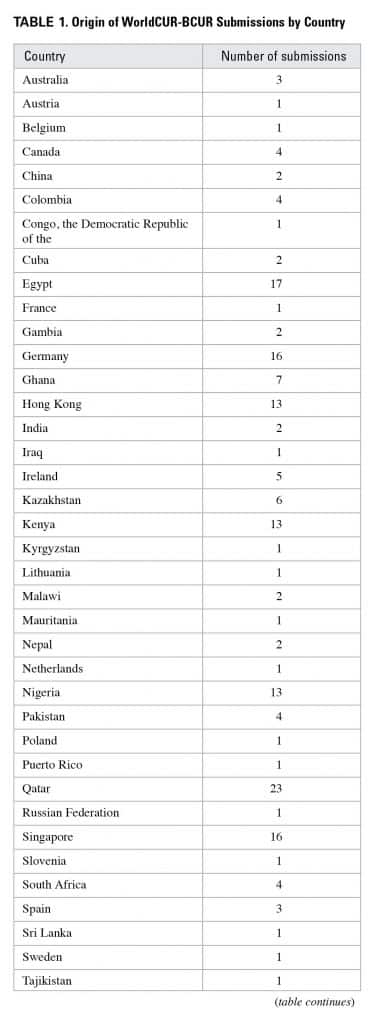
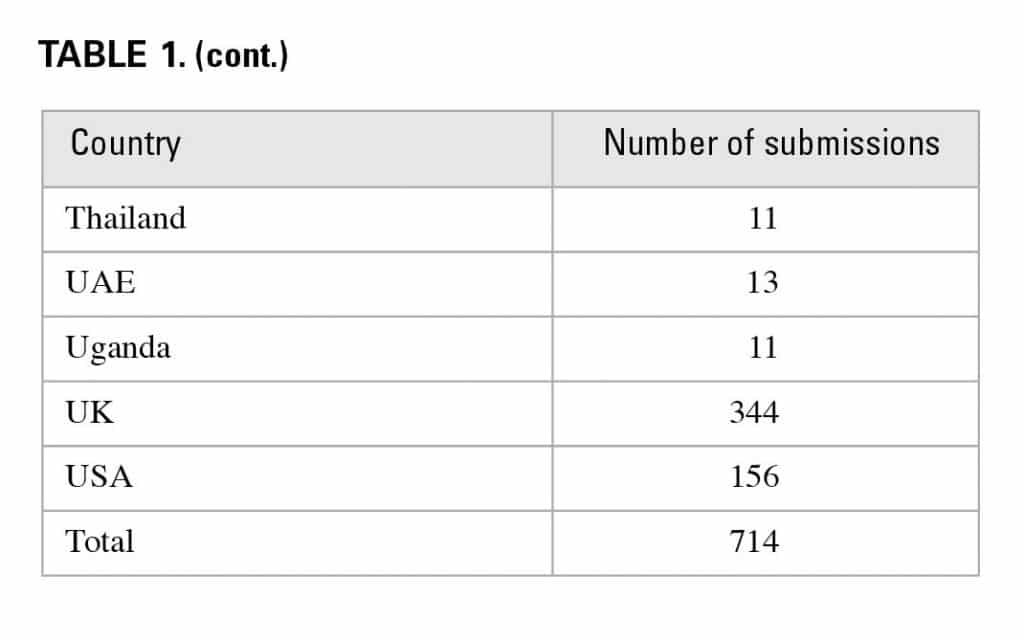
Those applying for either WorldCUR only or jointly to WorldCUR-BCUR were assessed via a double-blind peer review process, with participating reviewers being undergraduates, university faculty and staff from around the world. A call for reviewers was circulated to those who had served as reviewers for previous World Congresses and more widely. Interested undergraduate students were required to attend a training session on reviewing abstracts, hosted on Microsoft Teams, at which attendance by faculty/staff was desirable but not essential.
Abstracts were evaluated using a rubric that considered the effectiveness of conveying the research question, context, methodology, impacts, and overall presentation. Each abstract underwent review by both a student and a staff/faculty member. Abstracts from oversubscribed areas (primarily the United States and United Kingdom) were assessed by three reviewers. Full details of the abstract assessment rubric are available on the IATL website (University of Warwick 2023e).
Abstracts for WorldCUR were accepted based on a composite score from reviewers, while also considering the need for balanced representation across regions and disciplines. The submission deadline for BCUR was extended to align with its regular annual timeline. Some low-scoring WorldCUR applicants were offered a chance to revise and resubmit their abstracts following additional support from the organizing team, particularly where their abstract might represent the only submission from their country or disciplinary area. Abstract writing workshops were made available via MS Teams meetings, with timings designed to be accessible for students in different time zones.
Crucially, the University of Warwick followed previous WorldCUR precedents by allocating funds for delegates from low-middle income countries (as defined by the Organization for Economic Co-Operation and Development [OECD]). In the abstract acceptance process, a key focus was identifying top-scoring submissions from delegates studying in these specified countries. They were eligible to apply for the WorldCUR travel fund, provided by University of Warwick central funding, the International Office, academic departments and IATL itself. A total of 35 students received the opportunity to attend the conference through the travel fund from 15 countries, resulting in 30 presenters from 13 countries eventually obtaining visas and traveling to the event. The countries students attended from were Nigeria, Kazakhstan, Kyrgyzstan, Egypt, Ghana, Columbia, Uganda, Malawi, Kenya, Thailand, India, Nepal and South Africa. Unfortunately, five students selected for travel fund sponsorship could not attend due to rejected visa applications and they subsequently participated remotely. All accepted delegates were given comprehensive information about the need to hold a current passport and to apply for visa entry to the United Kingdom to attend the event. Letters of support were available on request through the Oxford Abstracts registration platform. Each individual application was dependent on both the individual’s country of residence and country of birth, as well as the associated visa requirements of the UK’s government. A small number of prospective delegates, including the previously mentioned travel fund applicants, were unable to obtain entry visas, for a variety of reasons, including a lack of clarity or errors when completing forms, international sanctions against their country of origin, or failure to meet required deadlines. In general, students expressed excitement regarding the process of obtaining passports and visas for international travel, particularly after such a long period of isolation.
WorldCUR-BCUR 2023
The joint WorldCUR-BCUR events took place between April 3-6, 2023, at the University of Warwick campus. The date selection was influenced by the pandemic, as rescheduling a year later limited venue and accommodation options. This posed challenges, including scheduling events around major religious holidays. The organizing team addressed these challenges by collaborating with Warwick’s multidenominational chaplaincy, which welcomed delegates during the events, offering venues and opportunities for religious observance or celebration. Over 700 delegates from across the world attended across the two events (see Tables 2 and 3).

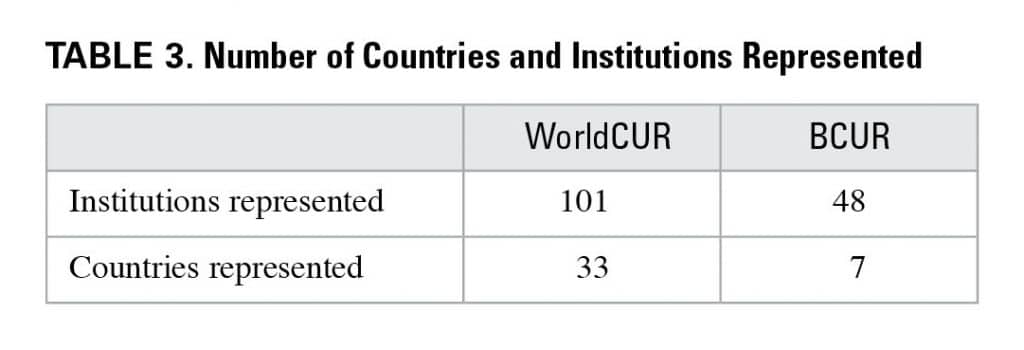
A map on the IATL website indicates the countries represented by delegates (University of Warwick 2023e), with WorldCUR delegates mostly attending for all three days of presentations from April 4-5, 2023 and BCUR delegates choosing to attend from April 5-6, 2023 or a single day if they preferred. WorldCUR and BCUR had separate spoken presentation sessions arranged in parallel streams across each day, in their own separate venues in proximity on the Warwick campus. Large joint poster sessions, as well as a joint keynote and closing plenary brought all the WorldCUR and BCUR delegates together, and were hosted in the Warwick Arts Centre, where all delegates also came together for catering and additional events such as a Next Steps Fair.
Delegates arriving for WorldCUR on the 3rd April were invited to attend orientation activities to local areas of interest, as well as a welcome reception that evening. Orientation trips took delegates to local places of interest, including Warwick Castle, Stratford-upon-Avon, and Coventry Cathedral. A varied social program was devised and accessible to all delegates throughout the event to ensure attendees felt welcome and supported in the UK, recognizing many delegates were visiting for the first time and that pandemic travel restrictions had kept so many at home for so long. Events included games, e-sports, mixers and a movie screening, alongside the opportunity to attend the formal conference dinner on 5th April.
The joint WorldCUR-BCUR keynote speaker was Professor Sir David Spiegelhalter, a renowned academic, who spoke about communicating complex knowledge to nonspecialist audiences. The joint closing plenary was chaired by Dr. David Metcalfe, a Warwick alumnus who shared his experiences as an undergraduate researcher and then chaired an Alumni Panel comprised of former University of Warwick students, who discussed undergraduate research and the impact it had had on them during and after university.
Student Presentations were organized by seven conference themes, Sustainability, Health, Power, Data, Create, The Future, Community. Full details of each theme can be found on the IATL website (University of Warwick 2023f). Delegates were encouraged to select themes they felt applied to their research when submitting their abstracts, and, taking that into account, a theme for each presentation was then allocated by a staff and student team at Warwick. This meant that spoken sessions brought together presentations from different disciplines under the same chosen theme to encourage interdisciplinary discussion. Overall presentation numbers for each theme are listed in Table 4, as a percentage of total presentations given at each event.
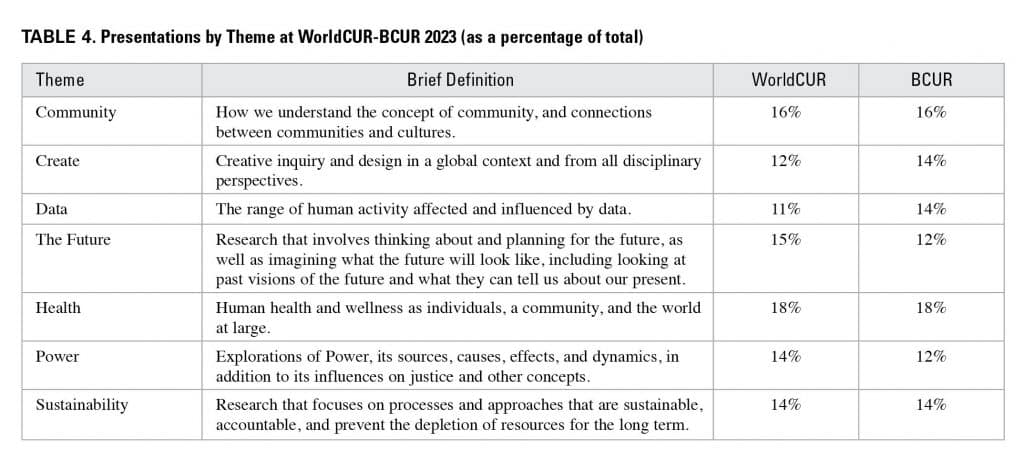
Replicating a successful aspect of the Oldenburg conference, separate ‘Theme Sessions’ were created to bring together all student presenters allocated to each theme. In these larger sessions, hosted by a staff delegate alongside a student organizing team member, delegates were given the chance to interact with other researchers in their theme area and discuss areas of similarity and divergence. Delegates also had the chance to contribute to a Padlet created for each Theme Session, with prompt questions provided. A Padlet is essentially an online wall of post-it notes – a resource that allows all participants to contribute comments, questions, resources and links in one easily accessible page.
A significant development for WorldCUR 2023 was the International Student Research Projects (ISRPs), a new pilot program, bringing together students from several institutions to complete joint research projects in the months before the Congress (University of Warwick 2023g). The students were recruited by members of the AGUR steering committee, from their own institutions, in order that the pilot could be more easily monitored and managed, resulting in student researchers from different universities and countries being formed into seven interdisciplinary, international teams. Each team was supported by two co-supervisors – one an established academic and one a postgraduate doctoral student – and met regularly online. The innovative ISRP model enabled students to undertake international research projects and build international connections and intercultural awareness despite restrictions to their mobility in the lead up to the Congress caused by the COVID-19 pandemic. The projects developed the skills of student researchers and novice postgraduate supervisors, as well as giving them experience to take into employment or further academic endeavors. The students within each ISRP were then invited to present their work together at WorldCUR. The pilot program included sixteen students from the US and the UK and serves as a model for larger scale implementation at future congresses.
Impacts and Outcomes
Of the 302 student presenters at WorldCUR, 24 percent responded to the event evaluation survey. The survey was based on previous evaluations the IATL team had carried out into student research activities. It included a focus on the connections made by students during the event, the impact on delegates’ academic confidence and identity, and the influence of the event on students’ plans to continue their academic journey beyond their undergraduate degree.
Overall responses indicated that delegates derived many positive outcomes from their participation. 100 percent of respondents indicated that attending the Congress had added value to their overall university experience and 96 percent said they would recommend it to another undergraduate student. Comments included “All in all it was an incredibly valuable experience, one every aspiring researcher should have” and that the best aspect of WorldCUR was “being able to share my research with a large and diverse range of people… it made me so confident in my research projects and has made me believe that I can achieve great things even at a young age.”
Feedback from student delegates in the evaluation survey seems to support the decision to hold the event in-person, giving delegates the chance to interact with like-minded students from around the world, and experience international interactions and different cultures. Delegates highlighted the greater potential impact on attendees when meeting face-to-face in comments such as “in-person conferences allow you to make direct connections and physical interactions with others that you just cannot online.” Benefits such as the ability to network and to fully immerse oneself in the real-world experience also featured in delegate comments, “in-person is 10 times more experiential and effective…[allowing] me to set aside time to network and focus on the conference as a whole” and “in-person is superior…you get to interact with other people and truly dedicate time to it instead of dividing your attention between the conference and other things.” While only 17 percent of respondents were traveling outside of their home country for the first time, almost half of respondents were experiencing their first visit to the UK. Many commented that the opportunity to travel to a different country was “exciting,” “a life-changing experience” and that the conference was “a transformative experience that I wouldn’t have been able to gain anywhere else.” How much these responses were influenced by delegates’ pandemic experiences is difficult to know, but, again, the feedback seems to vindicate the decision to hold the conferences in person.
Exposure to different cultures and countries of origin during in-person networking was highlighted as a key feature, including that “meeting intelligent and innovative international students was by far the highlight of my experience,” as well as the opportunity to interact with people “from diverse academic and social backgrounds” and “learning about similarities and differences in lifestyle and research.” Many delegates also commented on how they were exposed to a different culture of academia and were able to compare and contrast to their own experience of learning at their home institutions, gaining a “broader perspective on worldwide academia,”enabling them to “compare the types of research done in other institutions… and [learn] how can I improve the research skills at our university” and to “witness how learning and research is done in international settings.”
The benefits of attending undergraduate research conferences have been described in various studies (Douglas et al. 2018, Kneale et al. 2016, Walkington et al. 2017), and a number of these benefits were underscored in the delegate feedback. The practical experience of attending a conference and how it developed skills that delegates did not have regular access to as part of their degree studies, for example: “my studies in Germany are more about learning than doing and the conference allowed me to experience academic practice” and that attending gave them “an overview of how the job of scholar looks like, what are the different tasks in those jobs.” 80 percent of respondents said they felt more connected to the research work in their departments after attending, with comments such as participating had “increased my interest in taking research and understanding the impact of research studies.” Additionally, 89 percent of respondents said that after attending WorldCUR they felt more like a researcher and part of the academic community, with one delegate saying that this new perception of themselves as a researcher was the best thing about the conference overall.
Crucially, forums for students to present their research to peers in the research community are an opportunity for undergraduates to build their confidence in a supportive and inclusive environment. 100 percent of WorldCUR respondents said that attending had increased their confidence to attend another conference in the future, while 96 percent said it had increased their confidence in presenting their work to others. Delegates highlighted that the conference was a “learning, sharing and a connection platform,” where “everyone is at the same level academically” and that participating encouraged them to talk about their research generally, and specifically to do this with both international and interdisciplinary audiences. These ideas were reflected in one delegate’s reasons for recommending WorldCUR to future attendees, “This experience has made me so confident in my research, public speaking skills, and has made me feel more connected with others. I think that WorldCUR is a great opportunity for those wanting to meet fellow undergraduate researchers and to expand their own experience and opportunities.”
Reflections from our Student Director Team
Co-creation with undergraduate students forms a crucial part of IATL’s pedagogy. As previously stated, several students were included in the core organizing team for WorldCUR-BCUR. Their reflections provide further insight into the impact of the joint conferences.
Student Director Elvire de Thomasson was struck by the opportunities the events presented for networking “I was very privileged to have been able to meet various students from all over the world, from Colombia, to the United States and even Kenya. I also learned a lot from the research that each participant presented, reminding me that diversity is what makes interdisciplinary research so beautiful.” Student Director Fernando Conde Nodal’s observations reflected these comments saying that “It showed me what research looks like (and how it’s communicated) across different disciplines and different communities… which I can now apply to my own research endeavors: from ideation, to methodology, to communication.”
IATL’s Co-Creation Officer, Alice Khimasia was struck by a particular comment from a parent of a presenter and reflected on how it seemed to sum up the aims of the events, “…they said, it is truly inter-cultural. This was a very significant comment, because contributors were welcomed from all over the world, given the stage and the microphone to share their diverse research projects on an international platform, all equally valid and esteemed. In that sense, Warwick was not inviting people to our space on our terms, but truly sharing our space with students invited to share on their terms.”
Next Steps and Future Events
During WorldCUR-BCUR, delegates were encouraged to visit the Next Steps Fair, where opportunities for further study at Warwick were showcased. In our evaluation survey, attending the conference motivated 75 percent of respondents to apply for a Masters or doctorate program and 61 percent said that attending had confirmed their interest in their field of study, while 44 percent strongly agreed that it helped clarify which field of study they would next like to pursue, statistics that are underscored by comments such as “ it definitely confirmed my heart to pursue further studies and academia,” with one delegate stating that the addition to their CV had already helped them to gain a place on their preferred Master’s program. Our website encouraged delegates to join an alumni group post-conference and highlighted postgraduate opportunities at Warwick (University of Warwick 2023h). At the conclusion of WorldCUR-BCUR, delegates were also encouraged to submit a research paper to Warwick’s journal, Reinvention in which a selection of papers will be peer reviewed and published, alongside the WorldCUR Book of Abstracts.
Conclusion
The hosting of the third World Congress of Undergraduate Research was influenced by the iterations of the event that had come before it, the University of Warwick’s and IATL’s strategic priorities for undergraduate research and education, and by the substantial impacts of the COVID-19 global pandemic. Key components of the previous World Congresses were carried forward into Warwick’s event, such as the thematic organization of the sessions, the support of delegates from mid-to-low-income countries and the orientation activities prior to the Congress opening. New elements of the conference were included that aligned with IATL’s strategic priorities, such as incorporating an extended abstract submission format and related review process, providing support and training sessions prior to the event and introducing the ISRP program. In our initial vision for the event, it was suggested that the event was likely to benefit from Warwick’s experience of hosting ICUR, with hybrid options offering accessibility to students unable to travel. However, the pandemic’s impact, and the resulting proliferation of online events, increased the value attributed to the in-person nature of the Congress. This led the organizers to limit the opportunity for hybrid presentations, because it was felt that the pandemic’s normalization of hybrid events would have resulted in a disproportionate amount of online attendance, affecting the conference experience for those who did travel. An additional emphasis was placed on elements of the Congress that supported delegates’ in-person experiences, including interactive complementary sessions, a full student-hosted social program, a high-profile keynote speaker, and opportunities for networking. The ability for students to travel to events such as the World Congress is always at risk of being impacted by a multitude of factors, however the experience of hosting the Congress as a fully in-person meeting, underscored the benefits of these types of opportunities for student collaboration and networking. Recommendations to future hosts of similar events would be to learn from the challenges and successes of others, but also to incorporate local initiatives, pedagogy and experience to make each event distinctive.
Data Availability
The data, critical questions used in the scripts, and instruments underlying this study are available within the text.
Institutional Review Board
Not required as the research did not involve human or animal subjects or samples.
Conflict of Interest
All authors declare that they have no conflicts of interest.
References
Douglas, Caroline., Yearsley, James., Scott, Graham. W., & Hubbard, Katharine. E. 2018. “The student thesis conference as a model for authentic and inclusive student research dissemination”. Higher Education Pedagogies 3(1): 331–353. doi:10.12973/ijem.6.2.285
Kneale, Pauline., Edwards-Jones, Andrew., Walkington, Helen., & Hill, Jennifer. 2016. “Evaluating undergraduate research conferences as vehicles for novice researcher development”. International Journal for Researcher Development 7(2): 159–177. doi:10.1108/IJRD-10-2015-0026
Rivera, Julio, Maher Khelifa, Bushra Abu Hamdah, Aisha Mohammed Al-Hamadi, and Emma S. Zdgiebloski. 2018. “A Global Conversation: Reflections from the First World Congress on Undergraduate Research.” SPUR 2(1): 55–59. doi:10.18833/spur/2/1/4
University of Warwick. 2023a. “Ranking”. Accessed December 21, 2023. https://warwick.ac.uk/about/profile/ranking.
University of Warwick. 2023b. ““ICUR Portal”. Accessed September 1, 2023. https://www.icurportal.com/
University of Warwick. 2023c. “Reinvention Journal”. Accessed August 7, 2023. App.alchemer.com/login/v1
University of Warwick. 2023d. “WorldCUR-BCUR Team”. Accessed January 12, 2024. https://warwick.ac.uk/fac/cross_fac/iatl/student-research/bcur_worldcur_2023/teampage/
University of Warwick. 2023e. “Delegate Processes”. Accessed August 4, 2023. https://warwick.ac.uk/fac/cross_fac/iatl/studentresearch/bcur_worldcur_2023/teampage/
University of Warwick. 2023f. “Themes”. Accessed August 30, 2023. https://warwick.ac.uk/fac/cross_fac/iatl/student-research/bcur_worldcur_2023/themes/
University of Warwick. 2023g. “Programme Highlights”. Accessed August 7, 2023. https://warwick.ac.uk/fac/cross_fac/iatl/student-research/bcur_worldcur_2023/highlights/
University of Warwick. 2023h. ““Next Steps”. Accessed September 1, 2023. https://warwick.ac.uk/fac/cross_fac/iatl/studentresearch/bcur_worldcur_2023/next/
Walkington, Helen., Hill, Jennifer., & Kneale, Pauline. E. 2017. “Reciprocal elucidation: A student-led pedagogy in multidisciplinary undergraduate research conferences”. Higher Education Research and Development 36(2): 416–429. doi:10.1080/07294 360.2016.1208155
Caroline Gibson
University of Warwick, c.a.l.gibson@warwick.ac.uk
Caroline Gibson is Deputy Director in the Institute for Advanced Teaching and Learning at the University of Warwick. She has a strong interest in undergraduate research and is the co-designer and developer of the International Conference of Undergraduate Research and established Reinvention: an International Journal of Undergraduate Research in 2007. Caroline supports many diverse and innovative teaching and learning projects across the University of Warwick in areas such as internationalization, co-creation and interdisciplinarity.
Emma Baker began her career in book publishing and previously held positions at the Association for Jewish Studies, New York University Press, Cassell & Co, and Continuum Publishing (now Bloomsbury Academic), before joining the Institute for Advanced Teaching and Learning, University of Warwick in 2013. Since then, she has managed a variety of projects focusing on undergraduate research including the International Conference of Undergraduate Research and Reinvention: an International Journal of Undergraduate Research.
Jane Bryan is a Reader in Law at the University of Warwick, with a research interest in dialogue to empower and connect. Jane is the Academic Lead for Warwick University’s Community Values Education Program and a Foundation Fellow of the Warwick Higher Education Academy. She has also achieved Principal Fellowship of the Higher Education Academy (UK) (its highest award) for her strategic leadership in areas of teaching and student support, in particular student research.


